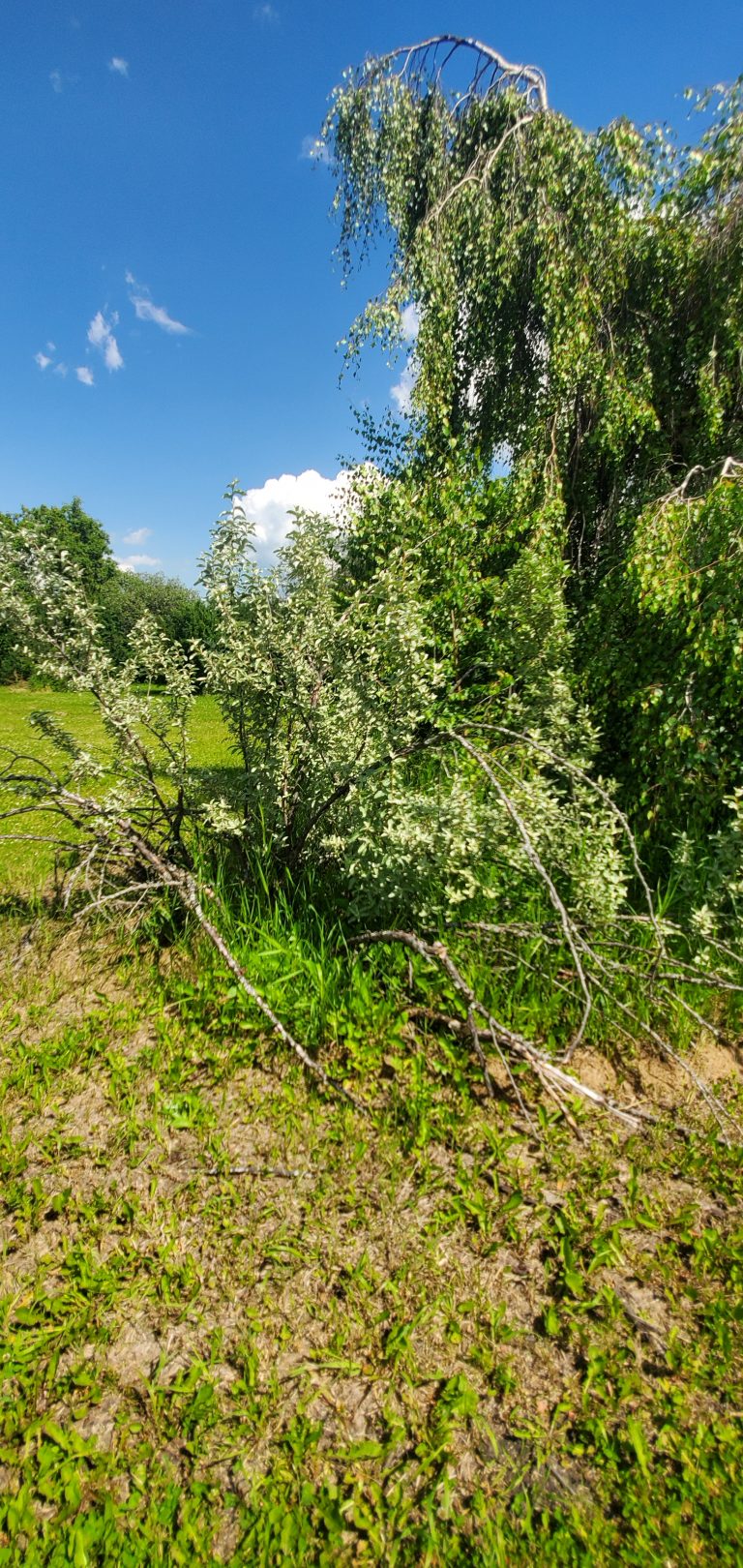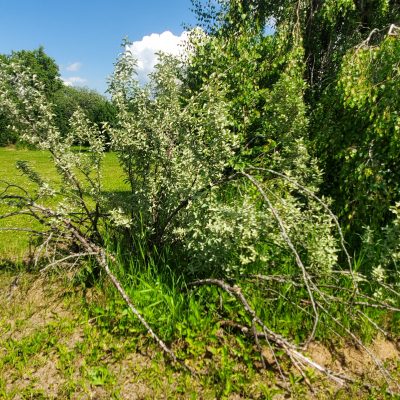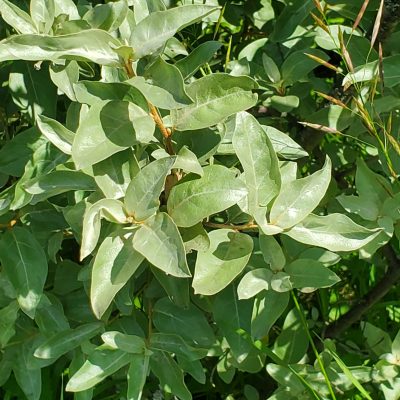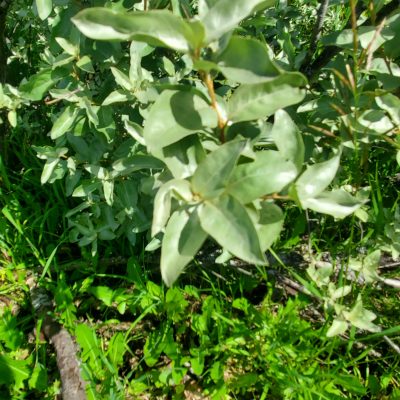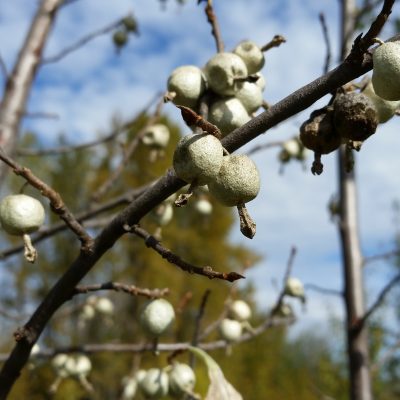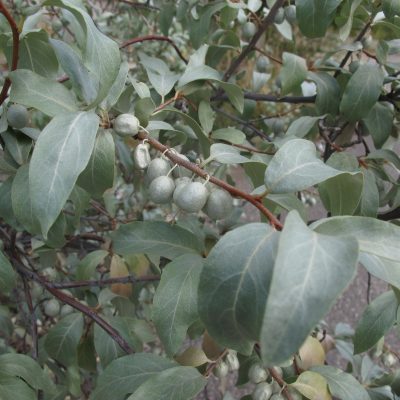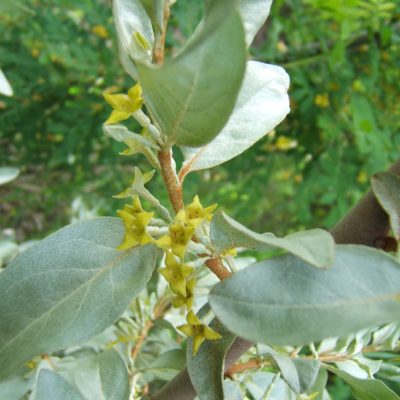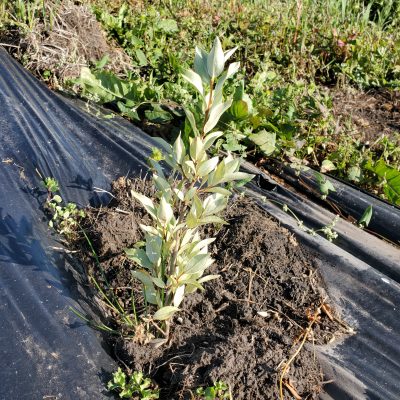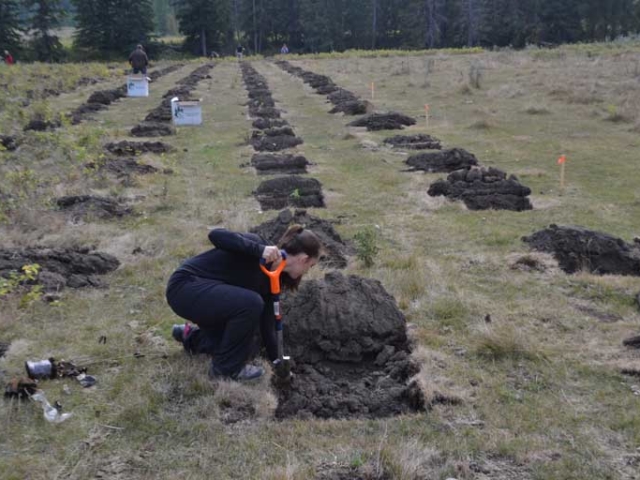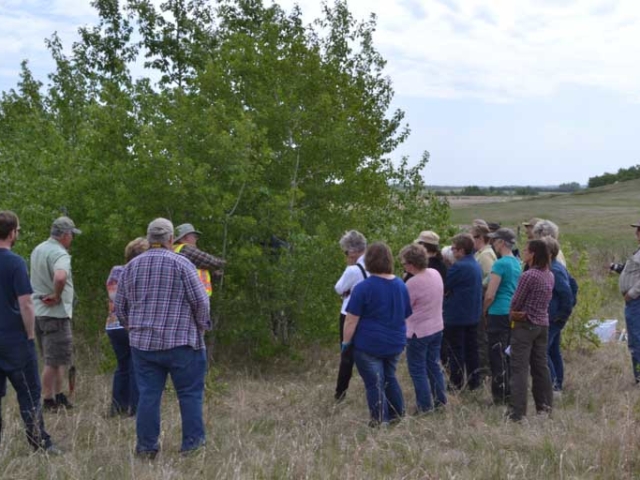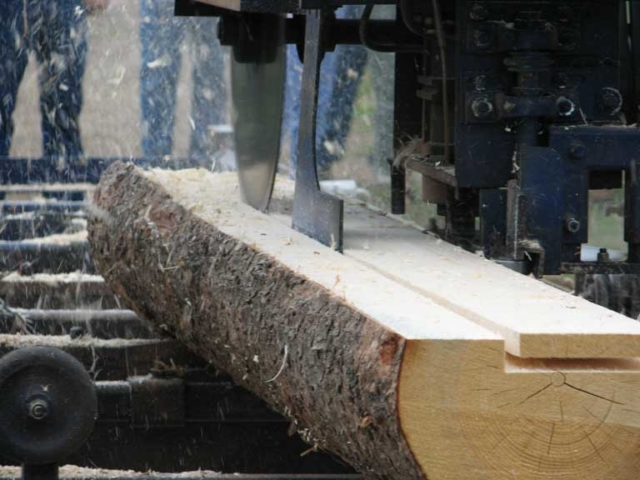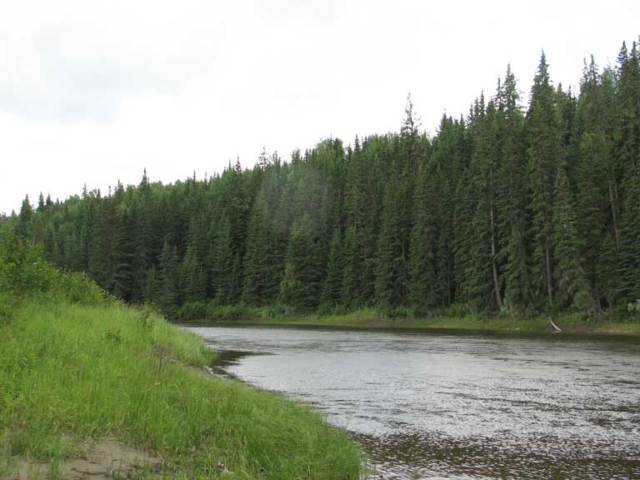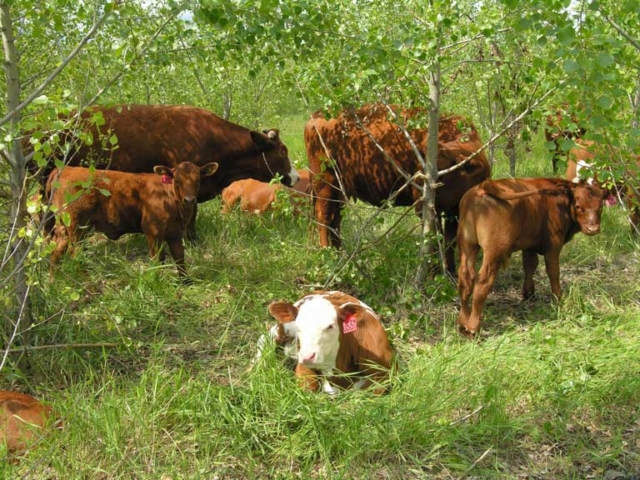Description / Details
Wolf Willow (Elaeagnus commutata)
Wolf willow, also known as Silverberry, is a small, sun-loving shrub known for its silvery green foliage. A hardy species, it is found throughout Alberta, and can tolerate sites with low nutrients or saline soils. Suckering allows this shrub to form dense thickets over time.
Blooming in Midsummer, the small, fragrant yellow flowers of the Wolf willow lead to the iconic silvery berry. these berries are packed with nutrients, including omega fatty acids. The seeds inside are edible, but their toughness makes them a great candidate to be turned into beads.
Wolf willow is native across Canada, and thrives from the boreal down through the grasslands, and is a welcome addition to any planting province-wide. Its nitrogen fixing ability and berries also make it an excellent addition to food forests or alley cropping systems.

